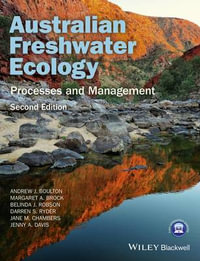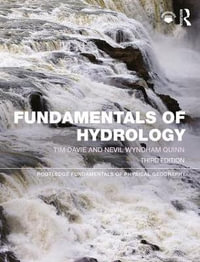Tracking Environmental Change Using Lake Sediments
Volume 3: Terrestrial, Algal, and Siliceous Indicators
By: John P. Smol (Editor), H. J. Birks (Editor), William M. Last (Editor)
Paperback | 28 October 2010
At a Glance
Paperback
$264.27
Aims to ship in 7 to 10 business days
ISBN: 9789048160488
ISBN-10: 9048160480
Series: Developments in Paleoenvironmental Research : Book 3
Published: 28th October 2010
Format: Paperback
Language: English
Number of Pages: 400
Audience: Professional and Scholarly
Publisher: Springer Nature B.V.
Country of Publication: NL
Dimensions (cm): 23.39 x 15.6 x 2.08
Weight (kg): 0.56
Shipping
| Standard Shipping | Express Shipping | |
|---|---|---|
| Metro postcodes: | $9.99 | $14.95 |
| Regional postcodes: | $9.99 | $14.95 |
| Rural postcodes: | $9.99 | $14.95 |
How to return your order
At Booktopia, we offer hassle-free returns in accordance with our returns policy. If you wish to return an item, please get in touch with Booktopia Customer Care.
Additional postage charges may be applicable.
Defective items
If there is a problem with any of the items received for your order then the Booktopia Customer Care team is ready to assist you.
For more info please visit our Help Centre.
You Can Find This Book In
This product is categorised by
- Non-FictionEarth Sciences, Geography, Environment, PlanningEarth SciencesHydrology & The HydrosphereLimnology & Freshwater
- Non-FictionEarth Sciences, Geography, Environment, PlanningEarth SciencesPalaeontology
- Non-FictionEarth Sciences, Geography, Environment, PlanningEarth SciencesGeology & The LithosphereSoil Science
- Non-FictionScienceBiology, Life SciencesLife Sciences in General
- Non-FictionScienceChemistryOrganic Chemistry
- Non-FictionEarth Sciences, Geography, Environment, PlanningEarth SciencesGeology & The LithosphereGeochemistry
- Non-FictionEngineering & TechnologyEnvironmental Science
- Non-FictionScienceScience in GeneralScientific EquipmentMicroscopy
- Non-FictionSciencePhysicsApplied PhysicsBiophysics























